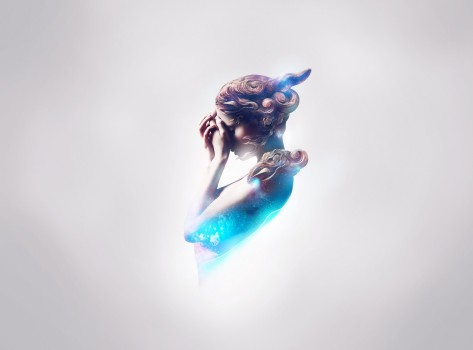
Kolkata - The City of Joy
Kolkata (formerly Calcutta) is the capital of the Indian state of West Bengal. It is located in eastern India on the east bank of the River Hooghly. The city has a population of almost 5 million, with an extended metropolitan population of over 14 million, making it the third-largest urban agglomeration and the fourth-largest city in India.
The city served as the capital in India during the British Raj until 1911. Once the centre of modern education, science, culture and politics in India, Kolkata witnessed economic stagnation in the years following India's independence in 1947. Since 2000 however, an economic rejuvenation has arrested the morbid decline, leading to a spurt in the city's growth.
Like other large cities, Kolkata continues to struggle with urbanisation problems like poverty, pollution and traffic congestion. A vibrant city with a distinct socio-political culture, Kolkata is noted for its revolutionary history, ranging from the Indian struggle for independence to the leftist and trade union movements.
Referred to as the "Cultural Capital of India", "The City of Processions", and the "City of Joy", Kolkata has been home to luminaries such as Rabindranath Tagore, Ronald Ross, Subhas Chandra Bose, Mother Teresa, Satyajit Ray, Satyendranath Bose, Jagdish Chandra Bose, Swami Vivekananda and many others.
How Kolkata got its name
The names Kolkata and Calcutta were probably based on Kalikata, the name of one of the three villages (Kalikata, Sutanuti, Gobindapur) in the area before the arrival of the British. "Kalikata", in turn, is an anglicised version of Kalikshetra ("Land of the goddess Kali"). However, other theories exist regarding the origin of the name.
The original settlement of the city was claimed to be located beside a khal, meaning a canal in Bengali. Khal might have given rise to the name. Again, the place was known for the manufacture of shell-lime and the name could have been derived from lime (kali) and burnt shell (kata).
Alternatively, the name may have been derived from the Bengali term kilkila ("flat area"). The government of West Bengal changed the official name of the city from Calcutta to Kolkata; the new name was legalised in 2001. A number of other Indian cities have enacted similar name changes.
History of Kolkata
The Government House in colonial Kolkata — when it was known as the "City of Palaces".The discovery of the nearby Chandraketugarh, an archaeological site, provides evidence that the area has been inhabited for over two millennia. The city's documented history, however, begins with the arrival of the British East India Company in 1690, when the Company was consolidating its trade business in Bengal. Job Charnock, an administrator with the Company who eventually settled in Sutanuti after invading through Hijli Kingdom, is traditionally credited with founding the city.
In 1699,the British completed the construction of old Fort William, which was used to station its troops and as a regional base. Kolkata (then Calcutta) was declared a Presidency City, and later became the headquarters of the Bengal Presidency. Faced with frequent skirmishes with French forces, in 1756 the British began to upgrade their fortifications.
When protests against the militarisation by the Nawab of Bengal Siraj-Ud-Daulah went unheeded, he attacked and captured Fort William leading to the infamous Black Hole incident. A force of Company sepoys and British troops led by Robert Clive recaptured the city the following year. Clive himself described it as one of the most wicked places in the Universe.
Kolkata was named the capital of British India in 1772. A contemporary description refers to the splendid sloth and languid debauchery of European society, when great men rode about in State coaches, with a dozen servants running before and behind them to bawl out their titles.
It was during this period that the marshes surrounding the city were drained and the government area was laid out along the banks of the Hooghly River. Richard Wellesley, the Governor General between 1797-1805, was largely responsible for the growth of the city and its public architecture which led to the description of Kolkata as 'the City of Palaces'. Miss Emily Eden (the sister of the Governor General, who gave her name to Eden Gardens), in 1836 wrote of Calcutta:
"Depend upon it, Calcutta is the finest place in the world.I know there are towns with far larger and grander buildings; but then they are not half so clean, and new, and beautiful, as this bride-like city. I have been standing on the roof of the house the last half-hour for air, and, as it was midnight, had an opportunity of seeing all the gay company - returning from an entertainment at the government-house; and I assure you I never witnessed any thing that could compare with the splendour exhibited."
Kolkata port in 1945. It was an important military port during WW2.By the early 19th century, Kolkata was split into two distinct areas — one British, one Indian, known as 'Black Town'. Even at the time, the poverty of the 'Black Town' shanties was considered shocking. The city underwent rapid industrial growth from the 1850s, especially in the textile and jute sectors; this caused a massive investment in infrastructure projects like rail roads and telegraph by British government.
The coalescence of British and Indian culture resulted in the emergence of a new class of urbane Indians — Asia's first middle class — whose members were often professionals, read newspapers, were Anglophiles, and usually belonged to upper-caste Hindu communities. Throughout the nineteenth century, a socio-cultural reform, often referred to as the Bengal Renaissance resulted in the general uplifting of the people. In 1883, Surendranath Banerjea organised a national conference — the first of its kind in nineteenth century India. Gradually Kolkata became a centre of the Indian independence movement, especially revolutionary organisations.
The 1905 Partition of Bengal on communal grounds resulted in widespread public agitation and the boycott of British goods (swadeshi movement). These activities, along with the administratively disadvantageous location of Kolkata in the eastern fringes of India, prompted the British to move the capital to New Delhi in 1911. The city's port was bombed twice by the Japanese during World War II.
As food stocks were being diverted to feed Allied troops, millions starved to death during the Bengal famine of 1943. In 1946, demands for the creation of a Muslim state led to large-scale communal violence resulting in the deaths of over 2,000 people. The partition of India also created intense violence and a shift in demographics - large numbers of Muslims left for East Pakistan, while hundreds of thousands of Hindus fled into the city.
Over the 1960s and 1970s, severe power shortages, strikes and a violent Marxist-Maoist movement — the Naxalites — damaged much of the city's infrastructure, leading to an economic stagnation. In 1971, war between India and Pakistan led to the mass influx of thousands of refugees into Kolkata resulting in a massive strain on its infrastructure. In the mid-1980s, Mumbai overtook Kolkata as India's most populous city.
Kolkata has been a strong base of Indian communism as West Bengal has been ruled by the CPI(M) dominated Left Front for three decades now — the world's longest-running democratically-elected Communist government. The city's economic recovery gathered momentum after economic reforms in India introduced by the central government in the mid-1990s. Since 2000, Information Technology (IT) services revitalized the city’s stagnant economy. The city has also experienced a growth in the manufacturing sector. Following similar moves elsewhere in the country, the state government changed the city’s official name from Calcutta to Kolkata in 2001; this act was seen largely as a political ploy.
Economy of Kolkata
Kolkata is the main business, commercial and financial hub of eastern India and the northeastern states. It is home to the Calcutta Stock Exchange — India's second-largest bourse. It is also a major commercial and military port, and the only city in the region to have an international airport. Once India's leading city and Capital, Kolkata experienced a steady economic decline in the years following India's independence due to the prevalent unstabilised political condition and rise in trade-unionism supported by left-wing parties.
Between the 1960s to the mid 1990s, flight of capital was enormous as many large factories were closed or downsized and businesses relocated. The lack of capital and resources coupled with a worldwide glut in demand in the city's traditional industries(e.g. jute) added to the depressed state of the city's economy. The liberalisation of the Indian economy in the 1990s along with the election of a new reformist Chief Minister, Buddhadeb Bhattacharya have resulted in the improvement of the city's fortunes.
Until recently, flexible production had always been the norm in Kolkata, and the informal sector has comprised more than 40% of the labour force. State and federal government employees make up a large percentage of the city's workforce. The city has a large unskilled and semi-skilled labour population, alongwith other blue-collar and knowledge workers. Kolkata's economic revival was led largely by IT services, with the IT sector growing at 70% yearly — twice that of the national average.
In recent years there has been a surge of investments in the housing infrastructure sector with several new projects coming up in the city. Kolkata is home to many industrial units operated by large Indian corporations with products ranging from electronics to jute. Some notable companies headquartered in Kolkata include ITC Limited, Bata India, Birla Corporation, Coal India Limited, Damodar Valley Corporation,United Bank of India, UCO Bank and Allahabad Bank Vijaya Bank.
Recently, various events like adoption of "Look East" policy by the government of India, opening of the Nathu La Pass in Sikkim as a border trade-route with China and immense interest in the South East Asian countries to enter the Indian market and invest have put Kolkata in an advantageous position.
Utility Services and Media
The Kolkata Municipal Corporation supplies potable water to the city, sourced from the River Hooghly. The water is purified and treated at Palta water pumping station located in North 24 Parganas. Almost all of Kolkata's daily refuse of 2500 tonnes is transported to the dumping grounds in Dhapa to the east of the town. Agriculture on this dumping ground is encouraged for natural recycling of garbage and sewer water. Parts of the city still lack sewage facilities leading to unsanitary methods of waste disposal.
Electricity is supplied by the privately operated Calcutta Electric Supply Corporation (CESC) to the city region, and by the West Bengal State Electricity Board in the suburbs. Frequent interruption of power supply was a problem until the late 1990s; however the situation has since improved. The city has 20 fire stations (under West Bengal Fire Service) that attend to 7,500 fire and rescue calls on average per year.
State-owned BSNL and private enterprises like Hutch, Airtel, Reliance Infocomm and Tata Indicom are the leading telephone and cell phone service providers in the city. Cellular coverage is extensive with both GSM and CDMA services being available. Broadband internet penetration has steadily increased with BSNL, Tata Indicom, Airtel and Reliance being the leading service providers.
Bengali language newspapers like Anandabazar Patrika, Aajkaal, Bartaman, Sangbad Pratidin and Ganashakti are widely circulated. Regional and national English newspapers such as The Telegraph, The Statesman, Asian Age, Hindustan Times and The Times of India are sold in large numbers. Some major periodicals are Desh, Sananda, Unish Kuri, Anandalok and Anandamela. Being the biggest trading market in Eastern India, Kolkata has a substantial readership of many financial dailies including Economic Times & Business Standard.
Vernacular newspapers such as those in Hindi, Gujarati, Oriya, Urdu, Punjabi and Chinese are also read by a minority. Kolkata has eight local FM stations: AIR Kolkata (FM Rainbow & FM Gold), Radio Mirchi (98.3 MHz), Red FM (93.5 MHz), Aamar FM (106.2 MHz), Gyan Vani (105.4 MHz), Big FM (92.7 MHz) and Power FM (107.8 MHz). The state-owned television broadcaster Doordarshan provides two free terrestrial channels, while four MSO provide a mix of Bengali, Hindi, English and other regional channels via cable.
Transport in Kolkata
Public transport is provided by the Kolkata suburban railway and the Kolkata Metro as well as by trams and buses. The suburban network is extensive and extends into the distant suburbs. The Kolkata Metro, run by the Indian Railways, is the oldest underground system in India. It runs parallel to the Hooghly and spans the north-south length of the city covering a distance of 16.45 km. Buses are the preferred mode of transport and are run by both government agencies and private operators. Kolkata is India's only remaining city to have a tram network, operated by Calcutta Tramways Company. The slow-moving tram services are restricted to certain areas of the city.
Hired forms of mechanised transport include the all-yellow metered taxis, while auto rickshaws ply in specific routes. Almost all the taxis in Kolkata are Ambassadors. This is unlike most other cities where Fiats are more common. In some areas of the city, cycle rickshaws and hand-pulled rickshaws are also patronised by the public for short distances. Private owned vehicles are less in number and usage compared to other major cities.
However, the city witnessed a steady increase in the number of registered vehicles; 2002 data showed an increase of 44% over a period of seven years. The road space (matched with population density) in the city is only 6%, compared to 23% in Delhi and 17% in Mumbai, creating major traffic problems. Kolkata Metro Railway and a number of new roads and flyovers have decongested the traffic to some extent.
Kolkata has two major long distance railway stations at Howrah Station and Sealdah. A third station named Kolkata has been launched in early 2006. The city is the headquarters of two divisions of the Indian Railways — Eastern Railway and South Eastern Railway.
The city's sole airport, the Netaji Subhash Chandra Bose International Airport at Dum Dum to the north of the city, operates both domestic and international flights. Kolkata is also a major riverport in eastern India. The Kolkata Port Trust manages both the Kolkata docks and the Haldia docks. There are passenger service to Port Blair in the Andaman and Nicobar Islands and cargo ship service to various ports in India and abroad, operated by the Shipping Corporation of India. Also there are ferry services connecting Kolkata with its twin city of Howrah.
Culture of Kolkata
Kolkata has long been known for its literary, artistic and revolutionary heritage. As the former capital of India, Kolkata was the birthplace of modern Indian literary and artistic thought. Kolkatans tend to have a special appreciation for art and literature; its tradition of welcoming new talent has made it a "city of furious creative energy". The city also has a tradition of dramas in the form of jatra (a kind of folk-theatre), theatres and Group Theatres.
A characteristic feature of Kolkata is the Para or neighbourhoods having a strong sense of community. Typically, every para has its own community club with a clubroom and often, a playing field. People here habitually indulge in adda or leisurely chat, and these adda sessions are often a form of freestyle intellectual conversation. The city has a tradition of political graffiti depicting everything from outrageous slander to witty banter and limericks, caricatures to propaganda.
Kolkata is known for its Bengali cinema industry dubbed "Tollywood", and for its art films. Its long tradition of filmmaking includes acclaimed directors like Satyajit Ray, Mrinal Sen, Tapan Sinha and Ritwik Ghatak to contemporary directors such as Aparna Sen and Rituparno Ghosh. The city is also noted for its appreciation of Indian classical music and the rich literary tradition set by Bankim Chandra Chattopadhyay, Rabindranath Tagore, Jibanananda Das, Kaji Nazrul Islam, Sarat Chandra Chattopadhyay, Tarashankar Bandopadhyay,Samaresh Basu,Shirshendu Mukhopadhyay, Buddhadev Guha,Sunil Gangopadhyay,Swapnamoy Chakraborty among others.
Key elements of Kolkata's cuisine include rice and macher jhol (fish curry), with Rasgulla, and Mishti Doi (sweet yoghurt) as dessert. Bengal's vast repertoire of fish-based dishes includes various hilsa preparations (a favourite among Bengalis). Street foods such as Beguni (fried battered eggplant slices ), Kati roll (flatbread roll with vegetable or chicken stuffing), phuchka (deep fried crêpe with tamarind and lentil sauce) and Chinese food from China Town in the eastern parts of the city are quite popular. Men usually prefer Western-style clothing and also traditional dhotis and kurtas, although women tend to prefer wearing traditional saris.
Kolkata has many buildings adorned with Gothic, Baroque, Roman, Oriental and Indo-Islamic (including Mughal) motifs. The "City of Palaces", as Kolkata is often called, is dotted with colonial buildings. Some of the major buildings of this period are well maintained and several buildings have been declared "heritage structures", while others are in various stages of decay. Established in 1814, the Indian Museum is the oldest museum in Asia and houses vast collection of Indian natural history and Indian art. The Victoria Memorial, one of the major tourist attractions in Kolkata, has a museum documenting the city's history. The National Library of India is India's leading public library. Academy of Fine Arts and other art galleries hold regular art exhibitions.
Durga Puja is the most notable of the religious and social festival in Kolkata. Durga Puja occurs over a period of five days in October. Other notable festivals include Diwali, Eid, Holi , Christmas, poila boishak (new year), Saraswati puja and Poush parbon (harvest festival). Some of the cultural festivals are Kolkata Book Fair, Dover Lane music festival, Kolkata Film Festival and National Theatre Festival.
Related Websites
West Bengal Tourism - Official site of the government organization. Features information on destinations, fairs, festivals, lodges, wildlife, arts, culture and adventure.
WBIDC - West Bengal Industrial Development Corporation, Government agency involved in the promotion of industrial development of West Bengal.



